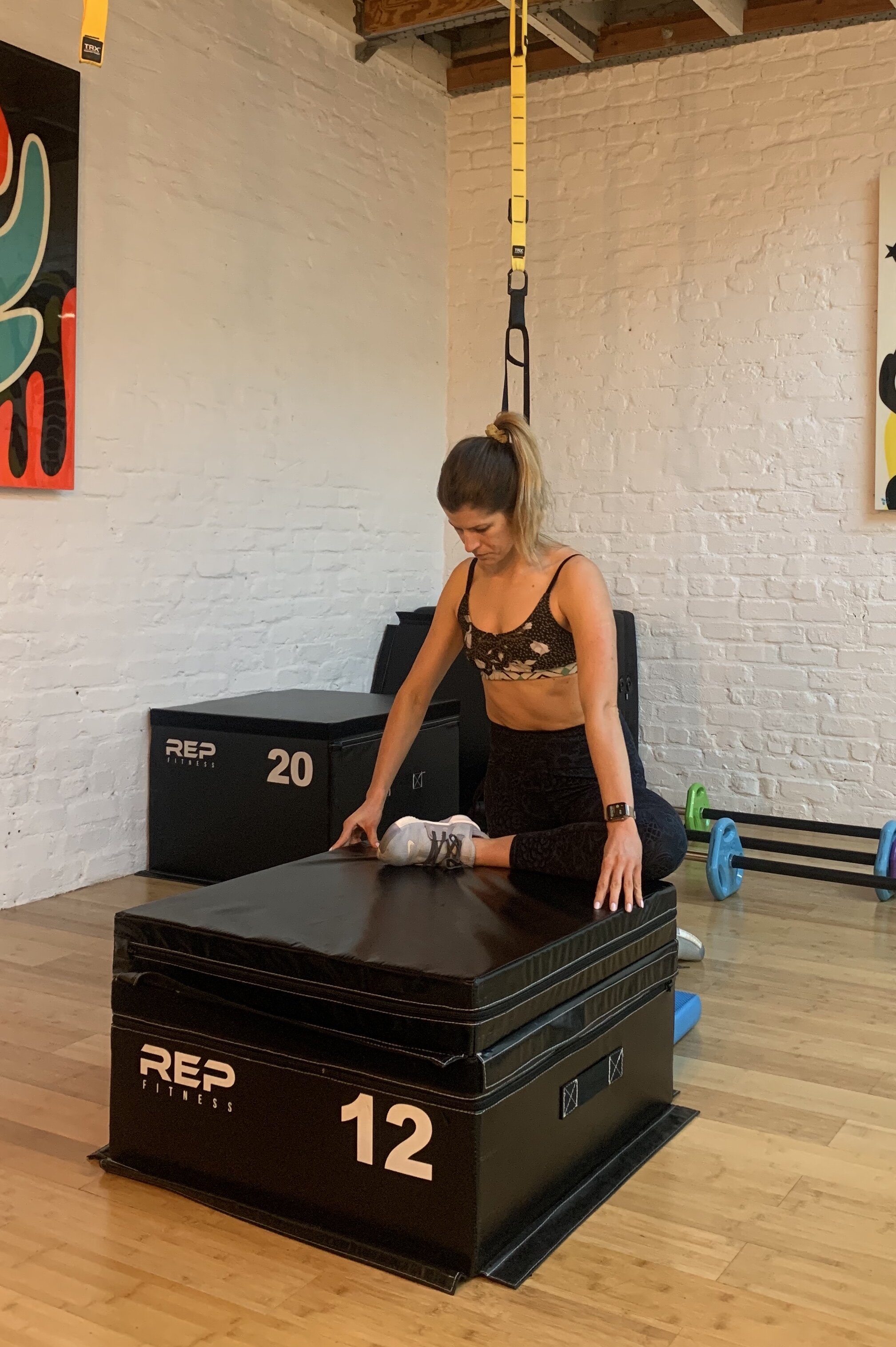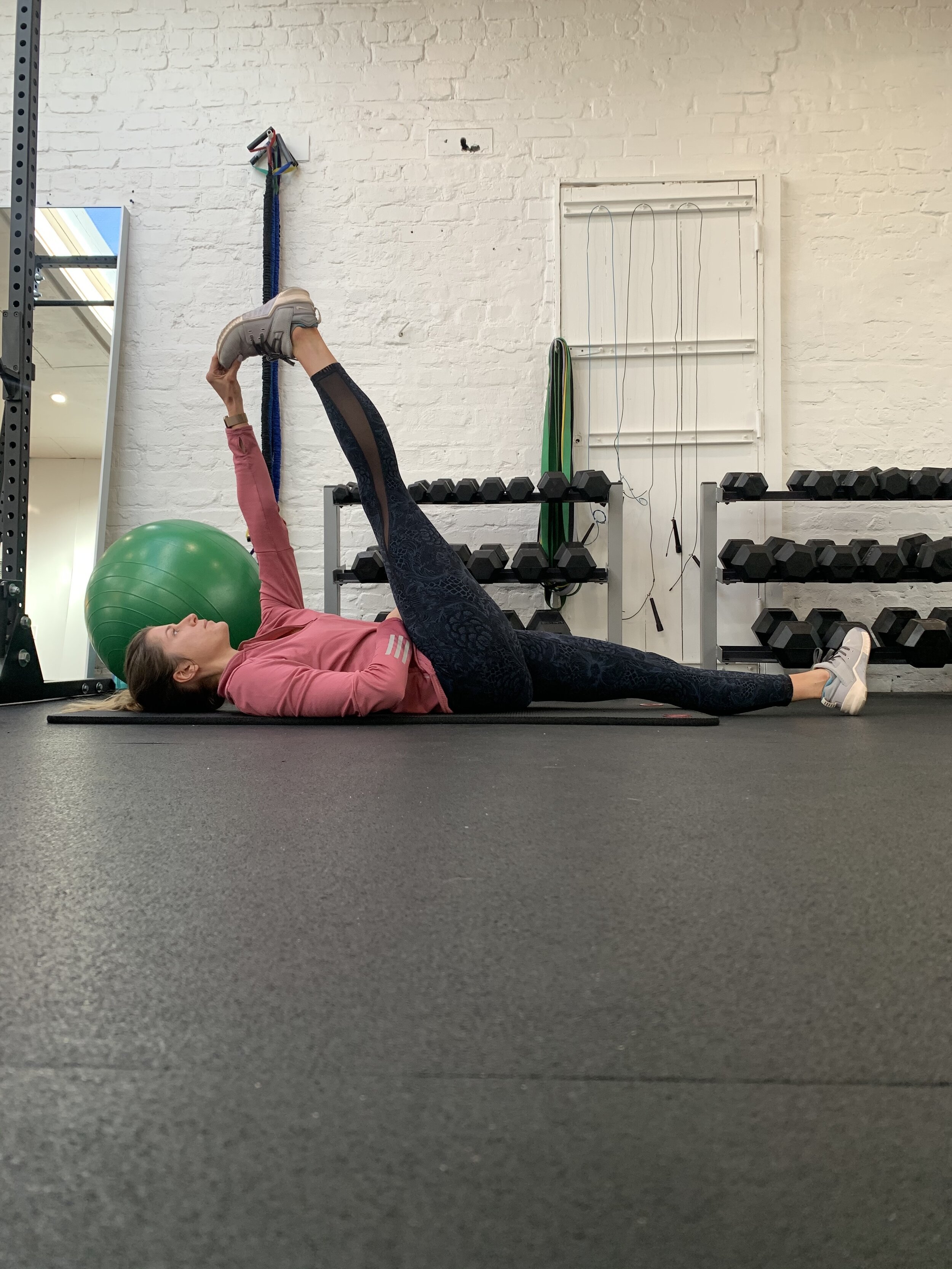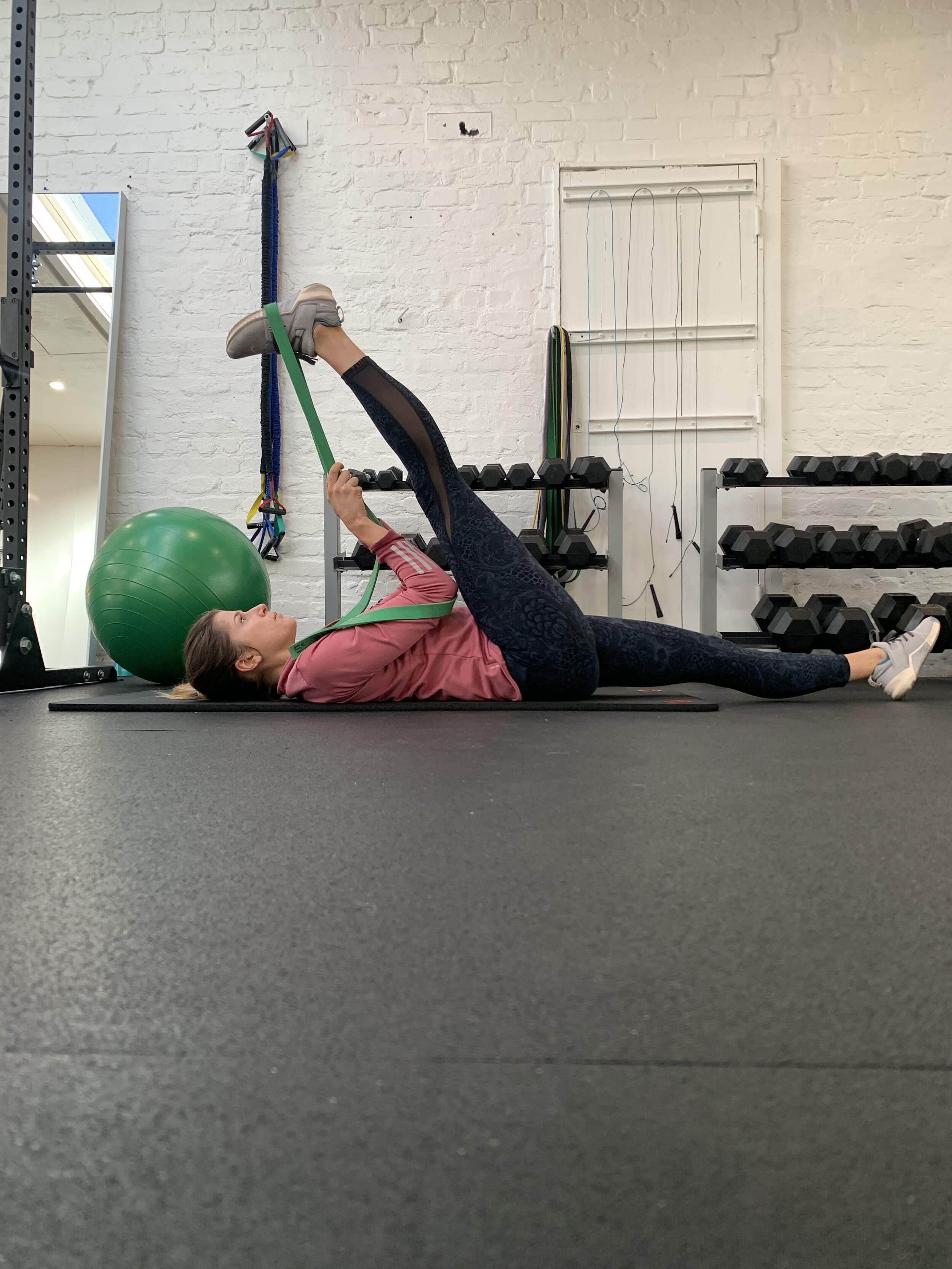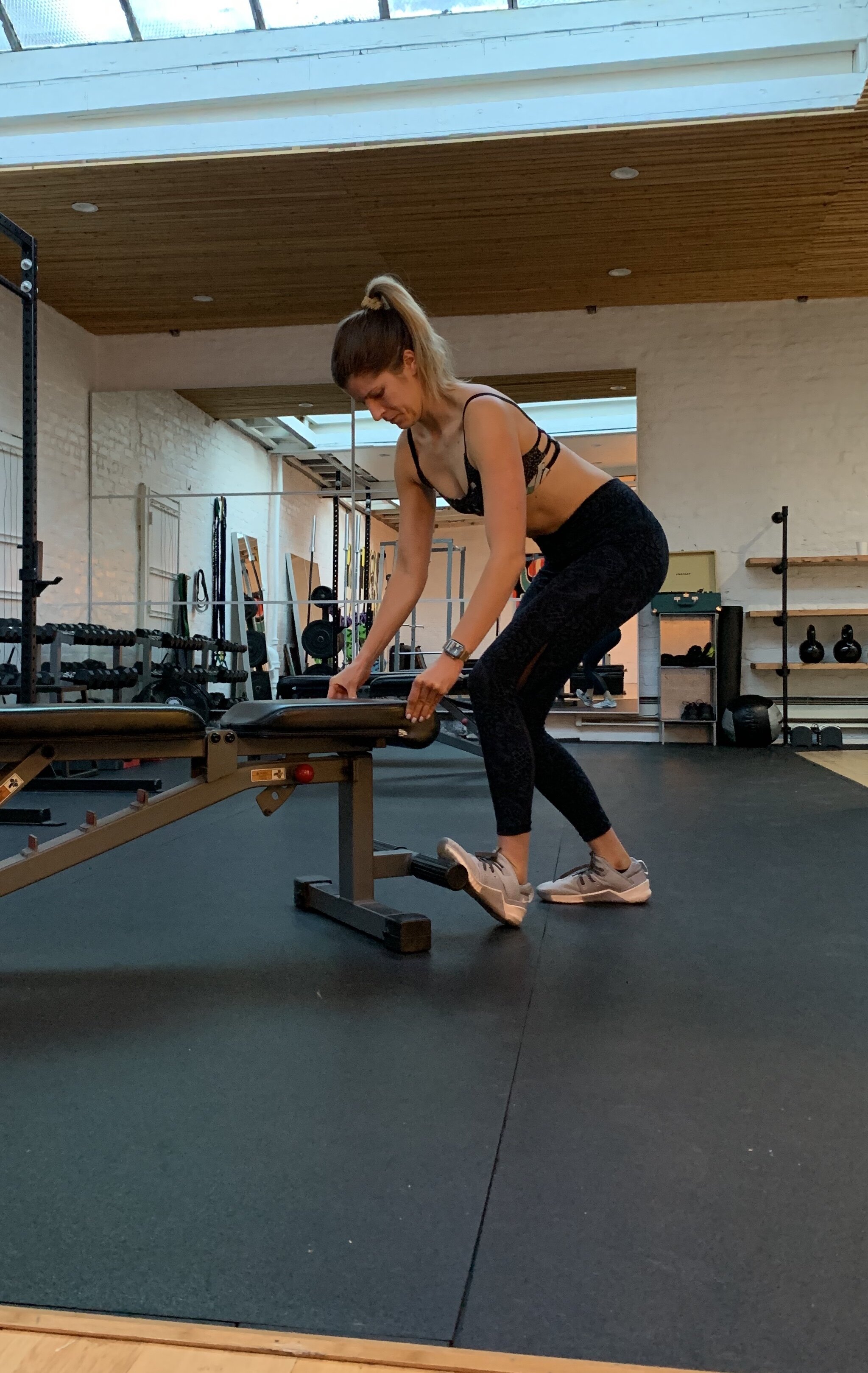Stretching?
If you aren’t a trainer you might not know this, but trainers love to talk in circles with each other about whether or not stretching matters. I spend a lot of time training a wide variety of clients in the real world, and anecdotally I find that stretching is something that makes all my clients feel better and exercise more - so I recommend it!
Here’s a bit on why I think you should stretch, the roots of stretching controversy, and how I suggest you implement it into your current routine.
Why stretch?
The goal of all stretching techniques, and really all training techniques, is better neuromuscular efficiency. This is a fancy phrase for using your muscles to power movement as efficiently as possible. These are two important ways that stretching helps us to be more efficient:
Muscle resiliency. More flexible muscles are more resilient to the impact of the exercises we perform in the gym and in life because they absorb less energy/shock. This results in a lower injury rate and better performance for longer. Muscles that experience less shock and micro trauma from the work we put them through work and recover more efficiently.
Length-tension relationships. Inefficiencies (or muscle imbalances) occur in part because some muscles are under active and need to be strengthened while others are overactive and need to be lengthened. Both overactive and underactive muscles are said have poor length tension relationships . We all want to build strength, but it’s very important (and more efficient) to do so in a balanced manner where all muscles have optimal length tension. One important step towards achieving this is to stretch overactive/shortened muscles so that we can properly strengthen their atrophied counterparts. The end goal of stretching here is to restore optimal length tension by stretching and strengthening as needed.
Force couple relationships. A group of muscles that work together to perform a movement is called a force couple. This is related because in order for force couples to efficiently perform a movement efficiently and without eventual injury, the length tension of all muscles involved should be optimal. We can’t have efficient force couples without good length tension.
To understand our new vocabulary, let’s take a look at one basic force couple: glutes + hamstrings and how they power complex lower body movements.Most people have overactive (tight) hamstrings and under active (lengthened/atrophied) glutes. In this very common case, both have suboptimal length tension! Hamstrings are all too often the first to fire up and power a complex movements like squats, bridges, and deadlifts. They should be working, but they shouldn’t be doing all the work. Those glutes should be helping! In this case, hamstrings and gluteal muscles are an inefficient force couple.
What does this mean for us? A lot of people complain that they can never successfully work their glute (butt!) muscles effectively during a leg workout! This is disappointing for many people with aesthetic goals. Even if you don’t care about a nice lookin’ butt, the glutes are important muscles for powering movement and stabilizing hips, knees and even ankles and shoulders. Relatedly, this is one reason that lot of people strain or tear their hamstrings.
—> Stretching tight hamstrings regularly will help you to effectively train glutes and avoid lower body injuries!
Increased muscle flexibility results in increased capacity to produce force (you can lift more, jump higher, run further!), better joint ROM, and normal/healthy movement patterns. These are all important for improving athletic performance!
Why stretching works
We don’t completely understand why stretching is effective, but studies show that it helps us to make positive adaptations both neurologically and mechanically. More fancy words, eh?
Mechanically: stretching changes our muscles mechanically by affecting their elasticity and viscosity. In this way it decreases a muscles resistance to force and increases it’s range of motion!
Neurologically: stretching can affect our motor neuron activity in muscle and surrounding soft tissue. This is part of how stretching affects viscosity (acute changes in nervous system trigger acute changes hormonal production which result in physical changes to our body). This is pretty complex, but what we need to know is that the combined mechanical and neurological effects of stretching increase overall joint and muscle range of motion (ROM).
The stretching controversy
We don’t 100% understand why it works on a scientific level. We just understand that regular stretching has an effect on muscle elasticity and ROM.
We don’t agree on how often you should do it. Recommendations range from 3x/wk to daily. Too few studies have been done on the value of stretching a tightened muscle just once a week. A lot of studies conclude that static stretching overactive muscles 5 days per week yields significant benefits.
We don’t agree on how long to hold a stretch. Recommendations range from 10 seconds to 30+ seconds. For older populations, studies show 60 seconds to be beneficial. For the most part, studies land on 1-4 repetitions of 15-30s holds. For example, holding a lying hamstring stretch at full extension for 15s, then some argue for repeating that another 2-3 times!
We don’t agree on the lasting nature of stretching benefits. Some studies show that stretching has a long term benefit, others show that you’ll lose the ROM you gained after 4 weeks of not stretching.
It’s hard to isolate the positive effect of stretching from the rest of a your training program. Exercise scientists are often at odds when it comes to the value of stretching and lengthening muscles because it can’t really be separated from the overall benefits of a comprehensive training program. Stretching alone won’t make your body more powerful or efficient, it’s just one important part of developing healthy joint mechanics. Yep, turns out every part of a program is connected. Strength, posture, and other recovery methods (sleep, water intake, nutrition, and more) are some of the other things that help us to keep joints, tissue and muscle healthy. Stretching is one of many related training tools that allow us to create a sustainable program and see the amazing results that come with not having to take a break due to injury every other week!
How to integrate stretching into your routine.
I’ll focus on static stretching as this is the most studied form of stretching, but dynamic stretching and NMS are other approaches that you might hear about.
For our purposes, static stretching means holding the muscle (tissue) in question at the end range of motion (full extension) for somewhere between 10 seconds and a minute.
Frequency
I suggest stretching tightened muscles five days per week, holding those stretches for 15-30s, and possibly trying the same stretch more than once per session. This doesn’t have to coincide with your workout - it can be performed at any point in the day. Simply set aside 5-10 minutes.
Since the long term benefits aren’t clear, I encourage you to commit to keep a consistent stretching routine long term. This frequency is only necessary for muscles that aren’t chronically overactive/tightened.
Intensity
Muscles should be held for the full amount of time at the first point of tension. This is the point at which it seems like your muscle is fully extended and you’d need to apply force to push it further. You might be mildly uncomfortable but the pain from a stretch should not be overwhelming.
Which muscles to target
If you aren’t sure what muscles are overtightened, check out this list of typical overactive and under active muscles provided by NASM. For a more individualized approach, consider investing in a one time assessment with a good trainer or physical therapist.
Check out the photo collection here for my favorite lower body stretches to get started.
If you are looking for more great mobility exercises, I will continue to update a stretching highlight on my Instagram with short videos of my favorites for all areas of the body.
Other fun and important stretching news





What to do if anyone ever argues that stretching isn’t that valuable because it doesn’t necessarily prevent soreness or expedite post workout muscle recovery.
Let them know that the main point of stretching is not to avoid post workout soreness or to recover from a single workout. It’s to ensure muscles are at their most efficient and optimal length long term so that you can do more while feeling less pain. This might improve your ability to recover and therefore reduce muscle soreness, but it’s long term complicated project!Stretching has real psychological benefits! Studies show that regardless of the physiological results, people self report lower muscle tension. Stretching can also reduce feelings of sadness and lower stress hormones. This can help people to mentally prepare for a better workout, among other things.
Avoid static stretching before a workout (maybe). Long holds at the end range of motion have been shown to potentially decrease your ability to produce force directly following the stretching session. This effect has been shown to last only 10 minutes in most studies, but up to an hour in some. If you want to get picky, plan your stretching routines either an hour + prior to exercise, or after the day’s workout. That said, it doesn’t seem to result in injury. Unless your goal is to produce maximum force in heavy lifts or intense sprints, it might not really matter. Also, these studies that show stretching as somethinig that limits power production have been performed exlusively on participants that already have good range of motion themselves. Results could likely be different for people who have less than optimal ROM! The important thing is that you find time to stretch at some point.
Vocab:
Force couple: A group of muscles that act together to perform a movement. This occurs efficiently when all muscles involved have good length tension relationships.
Length tension: the tension a muscle can produce at its resting length position. In order for the body to produce force and perform exercises correctly, muscles must have a healthy length tension relationship. We can improve this by stretching tight muscles to increase functional range of motion.




